Home>diy>Building & Construction>What Is A Loader In Construction
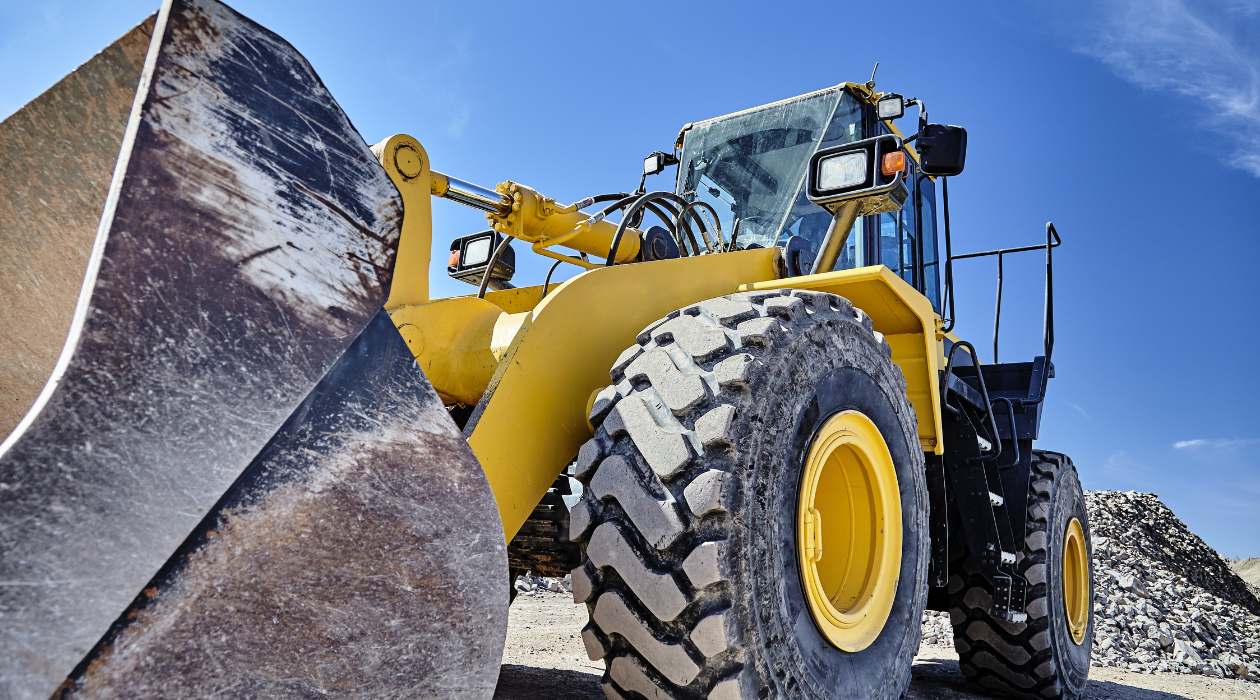

Building & Construction
What Is A Loader In Construction
Modified: December 7, 2023
Learn all about loaders in construction and how they contribute to the building construction process. Find out their uses, types, and benefits in this comprehensive guide.
(Many of the links in this article redirect to a specific reviewed product. Your purchase of these products through affiliate links helps to generate commission for Storables.com, at no extra cost. Learn more)
Introduction
Construction is a complex and multifaceted industry that involves various types of machinery and equipment. One such essential machine is the loader. Loaders, also known as front-end loaders or bucket loaders, are commonly used in construction projects to move and transport materials. They are versatile and robust machines that play a crucial role in the construction process.
A loader is a type of heavy equipment that is specifically designed to load, transport, and handle materials such as soil, gravel, sand, rocks, or debris. These machines are equipped with a wide, bucket-shaped attachment at the front, which allows them to scoop up materials and deposit them into trucks, containers, or other designated areas. Loaders are primarily used in construction sites, mining operations, agriculture, and various other industries.
Loaders come in different sizes and configurations, depending on the specific requirements of the project. Common types of loaders include front loaders, backhoe loaders, skid steer loaders, wheeled loaders, and crawler loaders. Each type has its own unique features and is suited for different tasks.
In this article, we will explore the different types of loaders and their functions and uses in construction. We will also discuss the factors to consider when choosing the right loader for construction projects.
Key Takeaways:
- Choose the right loader for construction projects by considering size, power, attachments, maintenance, and operating costs. A well-selected loader ensures efficient material handling and contributes to project success.
- Assess project needs, performance requirements, and budget to select a reliable, efficient, and cost-effective loader. Expert insights and careful decision-making lead to increased productivity and successful project outcomes.
Read more: What Is Construction
Definition of a Loader
A loader is a heavy-duty machine used in construction and other industries to efficiently move and transport various materials. It is designed with a front-mounted wide bucket or a shovel-like attachment that allows it to scoop and lift materials. Loaders are commonly used to handle materials such as soil, gravel, sand, rocks, and debris.
The primary function of a loader is to load materials into trucks, containers, or other vehicles for transportation. It can also be used for excavation, digging, clearing, and leveling tasks. Loaders are equipped with powerful hydraulics that enable them to lift heavy loads and maneuver in tight spaces.
Loaders can be operated by an operator who sits inside a cabin located above the machine. The operator controls the movement of the loader using joysticks and pedals, making precise adjustments to the bucket’s positioning and movements. Some loaders have advanced features such as 360-degree rotation and telescopic arms, which further enhance their versatility and efficiency.
These machines are commonly found on construction sites, mining operations, agricultural fields, and warehouses. Their ability to perform various tasks makes them indispensable in the construction industry. Loaders are known for their durability, reliability, and efficiency in handling materials, making them a valuable asset for any construction project.
It’s important to note that loaders should only be operated by trained and certified individuals who are familiar with the machine’s controls and safety guidelines. Safety measures such as wearing proper personal protective equipment (PPE) and conducting regular maintenance checks should always be followed to ensure the safe operation of loaders.
Types of Loaders
Loaders come in various types, each designed to cater to different construction needs and tasks. Let’s explore some of the most common types of loaders:
- Front Loader: Also known as a front-end loader or bucket loader, this type of loader features a large, wide bucket attachment at the front for loading and transporting materials. Front loaders are versatile and commonly used for tasks such as loading trucks, moving materials, and excavating.
- Backhoe Loader: A backhoe loader combines the functions of a loader and a backhoe (a digging arm with a bucket). This type of loader is commonly used in construction projects that require digging, trenching, and material handling. The backhoe/loader combination provides versatility and efficiency in completing multiple tasks on a job site.
- Skid Steer Loader: Skid steer loaders are compact, maneuverable machines that feature a small frame and a fixed bucket attachment. These loaders are known for their ability to work in tight spaces and uneven terrain. Skid steer loaders are commonly used in landscaping, site development, and small construction projects.
- Wheeled Loader: Wheeled loaders are equipped with large, heavy-duty wheels that provide stability and mobility on various surfaces. These loaders are commonly used in road construction, quarrying operations, and other projects that require high-speed material handling and transportation.
- Crawler Loader: A crawler loader, also known as a track loader, has a tracked undercarriage similar to that of a bulldozer. This design allows for better traction and stability in challenging terrains. Crawler loaders are commonly used in projects that require heavy-duty applications, such as mining, demolition, and land clearing.
These are just a few examples of the different types of loaders available. It’s important to choose the right type of loader based on the specific requirements of the project, the terrain, and the materials to be handled. Each type of loader offers unique features and advantages that can greatly impact the efficiency and effectiveness of the construction process.
Front Loader
The front loader, also known as a front-end loader or bucket loader, is one of the most common types of loaders used in the construction industry. It is characterized by its large, wide bucket attachment at the front, which enables it to scoop and lift materials with ease.
The front loader is a versatile machine that can handle a wide range of tasks on a construction site. Its primary function is to load materials into trucks, containers, or other vehicles for transportation. The bucket attachment can be filled with materials such as soil, gravel, sand, rocks, or debris, and then lifted and dumped into the desired location.
Front loaders are commonly used for tasks such as excavation, material handling, and land clearing. With their powerful hydraulics and robust design, they can handle heavy loads and operate in various terrain conditions.
One of the major advantages of front loaders is their ability to easily maneuver in tight spaces. The operator, sitting in the cabin located above the machine, has a clear view of the working area and can make precise adjustments to the bucket’s positioning and movements. This makes front loaders highly efficient and effective in completing tasks quickly and accurately.
Front loaders come in different sizes and configurations to suit different project requirements. Smaller front loaders are typically used in landscaping and small-scale projects, while larger front loaders are commonly found on construction sites and mining operations.
In addition to their loading capabilities, front loaders can also be equipped with various attachments to enhance their versatility. Attachments such as forks, grapples, and rakes can be easily added to the bucket attachment, allowing the front loader to perform additional tasks such as pallet handling, brush clearing, and material sorting.
Front loaders require regular maintenance to ensure optimal performance and longevity. This includes checking and replacing fluids, inspecting and lubricating components, and monitoring the wear and tear of the bucket and other attachments. It is essential to follow the manufacturer’s guidelines for maintenance and safety practices to ensure safe and efficient operation of the front loader.
Overall, front loaders are an invaluable asset in the construction industry. Their versatility, power, and maneuverability make them an essential machine for loading, transporting, and handling materials on construction sites.
Backhoe Loader
The backhoe loader is a versatile piece of equipment that combines the functions of a loader and a backhoe. It is commonly used in construction projects that require digging, trenching, and material handling. The backhoe/loader combination makes it a highly efficient and cost-effective machine for various tasks on the job site.
The backhoe loader consists of two main components: the loader attachment at the front and the backhoe attachment at the rear. The loader attachment functions similarly to a front loader, with a wide bucket that can scoop and lift materials. This allows for efficient loading and transportation of materials such as soil, gravel, and debris.
The backhoe attachment, located at the rear of the machine, consists of a digging arm or boom, a bucket, and a hydraulic system. This powerful combination enables the backhoe loader to perform tasks such as excavating trenches, digging holes, and moving earth. The boom can be extended and the bucket can be maneuvered to reach desired depths and angles.
One of the key advantages of a backhoe loader is its versatility. It can handle a wide range of tasks, which eliminates the need for multiple machines on the job site. For example, it can dig trenches for utility lines, load materials onto trucks, and backfill excavated areas all in one machine.
The backhoe loader is also known for its stability and maneuverability. It is designed with a heavy chassis and four-wheel drive, allowing it to handle various terrains and work in tight spaces. The operator, situated in a cabin above the machine, has clear visibility of the working area and can control the movements of both the loader and the backhoe attachments.
Attachments can further enhance the capabilities of a backhoe loader. Additional attachments, such as hydraulic hammers, augers, and grapples, can be easily added to the backhoe attachment, further expanding the machine’s versatility and range of applications.
Maintenance and regular inspections are essential for the efficient operation of a backhoe loader. This includes checking and maintaining the hydraulic systems, lubricating moving parts, and inspecting the bucket teeth and cutting edges for wear. Following the manufacturer’s guidelines for maintenance and safety practices is crucial to ensure the longevity and reliability of the machine.
In summary, the backhoe loader is a powerful and versatile machine that combines the functions of a loader and a backhoe. Its ability to perform various tasks makes it an efficient and cost-effective choice for construction projects that require digging, trenching, and material handling.
Read more: How To Use A Front Loader Washing Machine
Skid Steer Loader
The skid steer loader is a compact and agile machine that is known for its versatility and maneuverability. It is widely used in construction, landscaping, and other industries that require efficient material handling in tight spaces. The unique design and capabilities of the skid steer loader make it an invaluable asset on job sites.
A skid steer loader is characterized by its small size, maneuverable chassis, and fixed bucket attachment. Unlike other loaders, the skid steer has its wheels or tracks locked in pairs on each side, allowing it to turn and pivot within its own footprint. This “skid steer” motion gives the machine its name and makes it highly maneuverable in confined areas.
The compact nature of the skid steer loader allows it to access areas that larger machines may find challenging to navigate. The tight turning radius enables it to operate efficiently in small job sites, urban environments, and areas with limited space, such as residential yards or indoor construction sites.
One of the significant advantages of a skid steer loader is its ability to easily interchange attachments. The front-mounted attachment plate allows for quick and straightforward attachment changes, expanding the machine’s capabilities. Common attachments include buckets for material loading, forks for pallet handling, augers for digging holes, and grapples for debris clearing.
The operator of a skid steer loader sits in an enclosed cabin or platform above the machine. This positioning provides excellent visibility of the working area, enhancing safety and productivity. The operator controls the machine’s movements using joystick controls and foot pedals, making precise adjustments to accomplish tasks with accuracy.
Skid steer loaders are powered by diesel engines or electric motors, depending on the model. They typically have different speed settings, allowing operators to adjust speed based on the task at hand. Some advanced models also offer features such as pilot-operated controls, which provide even greater precision and ease of operation.
Maintenance and regular inspections are crucial for the smooth operation of a skid steer loader. This includes checking and maintaining hydraulic systems, inspecting tires or tracks for wear, lubricating moving parts, and ensuring proper functioning of safety features. Adhering to manufacturer’s guidelines for maintenance and safety practices is essential for optimal performance and longevity.
In summary, the skid steer loader is a compact and versatile machine that excels in maneuverability, making it ideal for tasks in tight spaces. Its ability to interchange attachments and its ease of operation make it an invaluable tool for various industries, including construction and landscaping.
Wheeled Loader
The wheeled loader is a powerful and versatile machine that is commonly used in construction, quarrying, and material handling operations. It is characterized by its large, heavy-duty wheels, which provide excellent mobility and stability on various surfaces. Wheeled loaders are known for their speed, efficiency, and ability to handle heavy loads.
Wheeled loaders are designed to handle a wide range of tasks, making them suitable for various applications in the construction industry. They are often used for loading and transporting materials such as soil, gravel, sand, rocks, and debris. Wheeled loaders can quickly and efficiently scoop up materials with their front-mounted bucket attachment and deposit them into trucks or containers for transportation.
One of the key advantages of a wheeled loader is its exceptional mobility. The large wheels, coupled with articulate steering, enable the machine to navigate rough, uneven terrain and traverse over obstacles effortlessly. This makes wheeled loaders an excellent choice for construction sites with varying ground conditions.
Wheeled loaders are also favored for their speed and maneuverability. They have powerful engines that allow them to reach high travel speeds, reducing travel time between loading and dumping locations. Additionally, the articulate steering system allows the machine to make tight turns, effectively maneuvering around the job site with ease.
Another advantage of wheeled loaders is their ability to handle heavy loads. They are designed with robust chassis and axles that can support and lift substantial amounts of material. The high lifting capacity of wheeled loaders makes them suitable for demanding tasks, such as loading large trucks or handling bulky construction materials.
Attachments can enhance the versatility of wheeled loaders, making them capable of performing a wide range of tasks. Additional attachments, such as forks, grapples, or snowplows, can be easily added to the bucket attachment, allowing the loader to perform specialized functions like material handling, waste management, or snow removal.
Maintenance is essential to ensure the optimal performance and longevity of wheeled loaders. Regular inspections of engine components, hydraulic systems, tires, and other key parts should be conducted. It is also important to follow the manufacturer’s guidelines for maintenance intervals and procedures to minimize downtime and maximize productivity.
In summary, wheeled loaders are powerful and versatile machines that excel in mobility, speed, and handling heavy loads. Their ability to navigate various terrains and their range of attachments make them indispensable in construction projects and material handling operations.
Crawler Loader
The crawler loader, also known as a track loader, is a heavy-duty machine that combines the features of a loader with the capabilities of a crawler tractor. It is commonly used in demanding construction, mining, and land clearing projects that require exceptional traction, stability, and lifting power.
Unlike wheeled loaders, crawler loaders are equipped with heavy-duty tracks instead of wheels. These tracks provide superior traction and stability, allowing the machine to operate efficiently on challenging terrains such as soft ground, steep slopes, or uneven surfaces. The tracks distribute the machine’s weight evenly and minimize ground pressure, reducing the risk of damage to the ground surface.
The key component of a crawler loader is the track system, which consists of a series of interlocking track chains and a set of rollers and idlers. The tracks allow for smooth and continuous movement, even in rough or slippery conditions. The track system also enables the machine to exert greater pushing and pulling power compared to wheeled loaders.
Crawler loaders are primarily used for material handling, excavation, and land clearing tasks. The front-mounted bucket attachment enables the machine to scoop up materials such as soil, rocks, and debris and transport them to desired locations. The robust design of crawler loaders and their strong hydraulic systems enable them to lift and handle heavy loads with ease.
One of the advantages of crawler loaders is their versatility. They can be equipped with various attachments, such as rippers, blades, or winches, to further expand their capabilities. These attachments allow the crawler loader to perform tasks such as trenching, grading, and site preparation, making it a valuable asset in construction and earthmoving projects.
Crawler loaders are operated by skilled operators who sit in a cabin located above the tracks. The operator has a clear view of the work area and can control the machine’s movements, including the bucket attachment and the track system, with precision. The advanced control systems of crawler loaders allow for smooth and responsive operation.
Maintenance of the crawler loader is crucial to ensure optimal performance and longevity. Regular inspections of the tracks, rollers, and idlers should be conducted to identify any signs of wear or damage. Lubrication of the track components and routine servicing of the hydraulic system are also necessary to maintain the machine’s efficiency.
In summary, crawler loaders are heavy-duty machines that excel in traction, stability, and lifting power. Their versatility and ability to tackle challenging terrains make them a preferred choice for construction, mining, and land clearing projects that require exceptional performance and reliability.
Functions and Uses of Loaders
Loaders are indispensable machines in the construction industry, offering a wide range of functions and uses. These versatile machines play a crucial role in various construction projects, contributing to increased efficiency and productivity. Let’s explore some of the primary functions and uses of loaders:
- Loading and Transporting Materials: One of the main functions of loaders is to load and transport materials on a construction site. Loaders are equipped with a bucket attachment at the front that can scoop up materials such as soil, gravel, sand, rocks, or debris. The materials can then be transported and deposited into trucks, containers, or other designated areas.
- Excavating and Digging: Loaders with backhoe attachments have the capability to excavate and dig. The backhoe attachment consists of a digging arm or boom with a bucket, allowing the loader to efficiently excavate trenches, dig holes, or remove earth. This makes loaders valuable for tasks such as foundation digging, utility installation, and site preparation.
- Clearing and Leveling: Loaders can be used for clearing and leveling tasks on construction sites. The bucket attachment can be employed to remove debris, brush, or other unwanted materials from the work area. Loaders can also be equipped with specialized attachments, such as grapples or rakes, for more efficient clearing and land leveling.
- Snow Removal: In regions with heavy snowfall, loaders are used for snow removal. They can be fitted with snow blades or snow blowers to effectively clear snow-covered surfaces such as roads, parking lots, or walkways. Loaders’ high power and maneuverability make them ideal for efficient snow removal operations.
- Material Handling and Stockpiling: Loaders are essential for handling and stockpiling construction materials. They can be used to move and organize materials on a job site, ensuring efficient workflow and easy access to required materials. Loaders can help create stockpiles of materials such as aggregate, sand, or gravel for later use or distribution.
- Landscaping and Earthmoving: Loaders are utilized in landscaping and earthmoving projects. From grading and leveling land to moving soil and filling trenches or holes, loaders can help transform the landscape and create a foundation for further construction and development.
These are just a few examples of the functions and uses of loaders in the construction industry. Loaders are highly versatile machines that can be adapted for various tasks and applications, greatly contributing to the efficiency and effectiveness of construction projects.
Read more: Whirlpool Washer Top Loader How To Use
Loading and Transporting Materials
One of the primary functions of loaders is the loading and transportation of materials on construction sites. Loaders are specifically designed with a bucket attachment at the front that enables them to efficiently scoop up various types of materials, such as soil, gravel, sand, rocks, or debris.
Loaders excel in their ability to handle heavy loads, making them ideal for tasks that require the movement of large quantities of materials. The operator operates the loader’s controls from the cabin, positioning the bucket over the desired materials and using hydraulic controls to scoop them into the bucket.
Once the materials are loaded into the bucket, loaders are equipped with strong lifting capability that allows them to raise the loaded bucket to an appropriate height. This positioning gives them the ability to deposit the materials into trucks, containers, or designated areas for transportation. Large loaders can elevate their buckets high enough to load materials directly into elevated dump trucks or hoppers.
The transportation aspect of loaders plays a vital role in the construction process. Once materials are loaded into the machine, loaders can quickly and efficiently move them to the desired location. This eliminates the need for manual labor, which could be time-consuming and physically demanding.
Loaders are highly maneuverable machines, allowing them to navigate through construction sites with ease. The operator can control the loader’s movements, including steering, acceleration, and braking, ensuring the safe and efficient transportation of materials to their designated destinations.
In addition to their loading and transportation capabilities, loaders can also be equipped with additional features or attachments to enhance their efficiency and versatility. For example, loaders can be fitted with weighing systems to accurately measure and track the weight of the loaded materials. This ensures compliance with weight regulations and facilitates precise inventory management.
Furthermore, loaders can be equipped with various bucket sizes and types to accommodate different materials and project requirements. For example, larger buckets are suitable for lighter materials like sand or soil, while smaller buckets are more appropriate for heavy materials like rocks or debris.
Overall, the loading and transportation functions of loaders play a vital role in the construction industry. Loaders enable the efficient movement of materials, saving time and labor costs, and contributing to the overall productivity and success of construction projects.
When operating a loader in construction, always ensure that the bucket is properly secured and the load is evenly distributed to prevent tipping or imbalance. Regularly inspect and maintain the loader to ensure safe and efficient operation.
Excavating and Digging
Loaders are not only used for loading and transporting materials; they are also equipped with specialized attachments that enable them to excel at excavating and digging tasks. Loaders with backhoe attachments are the primary machines used for these specific functions, making them versatile tools on construction sites.
The backhoe attachment of a loader consists of a boom, a stick, and a bucket. This combination allows the loader to efficiently excavate and dig in various soil conditions. The operator controls the movement of the backhoe attachment from the cabin, making precise adjustments to the position and depth of the excavation.
Excavating with a loader involves digging trenches, excavating foundations, and creating utility lines. The powerful hydraulics of the loader enable it to dig into the ground with ease, breaking through the soil and removing it from the excavation area. Loaders can handle a wide range of soil types, including clay, sand, gravel, and rocky terrain.
The digging capabilities of loaders make them highly efficient tools in the construction industry. They can quickly and accurately excavate precise trenches for utilities such as pipes or cables. Loaders can also dig foundations for buildings or structures, creating a solid base for further construction work.
Another advantage of loaders in excavating and digging tasks is their ability to load the excavated soil or debris directly into trucks or containers for easy disposal. This minimizes the need for additional manual labor or the use of additional machinery for the loading process.
Furthermore, loaders can handle grading and leveling tasks after the excavation is completed. The bucket attachment can be adjusted to create smooth, even surfaces, ensuring the area is ready for the next construction phase. This eliminates the need for separate grading machinery, saving both time and resources.
The operator of the loader is critical in ensuring precise and accurate excavating and digging. They must have a good understanding of the ground conditions, be skilled in operating the loader’s controls, and follow safety procedures to avoid accidents or damage to underground utilities.
In summary, loaders with backhoe attachments excel in excavating and digging tasks. Their powerful hydraulic systems, combined with the operator’s skill, allow for precise and efficient soil removal, creating a solid foundation for construction projects.
Clearing and Leveling
Loaders are versatile machines that can be utilized for a variety of tasks on construction sites. One of their important functions is clearing and leveling, which involves the removal of debris, vegetation, and uneven surfaces to prepare the site for construction or landscaping activities.
Clearing with loaders involves removing unwanted materials, such as rocks, branches, tree stumps, and construction waste from the work area. Loaders are equipped with a bucket attachment at the front that allows them to scoop up and lift these materials with ease. The operator controls the movements of the loader, positioning the bucket over the unwanted materials and then depositing them into trucks or designated areas for disposal.
Loaders can efficiently clear the work area, creating a cleaner and safer environment for construction workers to proceed with their tasks. By removing obstacles and debris, loaders contribute to the overall efficiency of the project as workers have unobstructed access to the construction site.
Another important aspect of clearing with loaders is land leveling. Loaders equipped with specialized attachments, such as blades or rakes, can smooth and level the ground surface. This is particularly useful in landscaping or earthmoving projects where an even surface is required for further construction or planting.
Loaders can quickly and accurately level the ground, making adjustments as needed to ensure a consistent grade. The operator can control the loader’s movements, tilting the bucket or using the attachment to distribute materials evenly across the area being leveled.
Clearing and leveling with loaders not only enhance the visual appeal of the site but also contribute to its functional aspects. By creating a level surface, loaders help with the installation of foundations, utility lines, and landscaping elements, ensuring they are properly aligned and functional.
In addition to clearing and leveling large areas, loaders can also be used for spot clearing and precise land preparation. The versatility of loaders allows them to maneuver in tight spaces, making it easier to clear unwanted vegetation, rocks, or debris in smaller, hard-to-reach areas.
The operator’s skill and attention to detail play a crucial role in efficient clearing and leveling with loaders. They need to be aware of the specific requirements of the project and have a good understanding of the desired outcome. Additionally, operators should follow proper safety practices to minimize the risk of accidents or damage to the loader or surrounding structures.
In summary, loaders play a vital role in clearing and leveling tasks on construction sites. Their ability to efficiently remove debris, level the ground, and create a clean, even surface contributes to the overall success and progress of construction and landscaping projects.
Snow Removal
Loaders are not limited to construction sites; they are also highly effective in snow removal operations. With their powerful performance and ability to maneuver through challenging conditions, loaders become essential machines for clearing snow-covered surfaces and ensuring safe passage during winter months.
Snow removal with loaders involves equipping the machine with specialized attachments such as snow blades or snow blowers. These attachments enable loaders to efficiently clear snow from roads, parking lots, sidewalks, and other areas that require immediate attention.
Loaders equipped with snow blades are ideal for pushing snow to the sides, creating clear paths and widening roadways. The operator positions the blade attachment at the front of the loader and adjusts it to the desired angle to effectively remove the snow. The size of the blade attachment determines the width of the cleared path, allowing for efficient snow removal in a single pass.
Another snow removal method involves using loaders with snow blowers. Snow blowers are mounted at the front of the loader and are designed to lift and throw snow to a designated area. Loaders equipped with snow blowers are highly efficient for removing large amounts of snow, particularly in areas with heavy snowfall.
The advantage of using loaders for snow removal is their sheer power and robust structure. Loaders can handle heavy and compacted snow, easily pushing or blowing it aside. The size and weight of loaders contribute to their ability to make quick work of even the most challenging snow depth and density.
Loaders are also highly maneuverable, allowing operators to navigate through narrow spaces and around obstacles. With their articulate steering system, loaders can swiftly turn and change direction, making them highly efficient in clearing snow from tight corners and confined areas.
During snow removal operations, loaders can also assist in relocating the accumulated snow to designated areas or dump trucks for transportation. This ensures that the cleared areas remain free of snow buildup and allows for proper snow management and disposal.
Operators play a critical role in efficient snow removal with loaders. They must have excellent control over the machine’s movements, taking into consideration the terrain conditions and the safety of nearby objects or structures. Proper training and adherence to safety guidelines are essential to avoid accidents and ensure efficient snow removal.
In summary, loaders are highly effective and versatile machines for snow removal operations. Their power, maneuverability, and ability to handle heavy loads make them an invaluable asset in ensuring safe and accessible surfaces during winter months.
Choosing the Right Loader for Construction Projects
Choosing the right loader for construction projects is crucial to ensure optimal performance, efficiency, and cost-effectiveness. With various types and models available, it’s essential to consider several factors that will influence the selection process. Here are some key considerations when choosing the right loader for your construction project:
- Size and Capacity: Assess the size and scope of your construction project to determine the appropriate size and capacity of the loader needed. Larger projects may require larger loaders with higher lifting capacities, while smaller projects or confined spaces may call for compact loaders that can maneuver easily.
- Power and Performance: Consider the power and performance requirements of your project. Loaders with higher horsepower and torque can handle heavy loads and challenging terrain more efficiently. Evaluate the machine’s engine power, hydraulic system, and overall performance specifications to ensure it meets your project’s needs.
- Attachments and Versatility: Evaluate the versatility of the loader by considering its compatibility with a range of attachments. Depending on the tasks at hand, such as digging, material handling, or snow removal, choose a loader that can accommodate various attachments to enhance its functionality and adaptability on the job site.
- Maintenance and Operating Costs: Assess the maintenance and operating costs of the loader. Consider factors such as fuel consumption, maintenance intervals, and availability of parts. Opt for a loader that is reliable, easy to maintain, and cost-effective over the long term.
- Operator Comfort and Safety: A comfortable and safe working environment is essential for the loader operator. Look for loaders with ergonomic cabins that provide good visibility, intuitive controls, and climate control systems. Additionally, consider loaders with safety features such as anti-roll protection, reverse cameras, and audible alarms to enhance operator safety.
It is also advisable to consult with industry experts, dealers, or rental agencies to help select the most suitable loader for your specific project requirements. They can provide insights and recommendations based on their experience and knowledge of different loader models.
Ultimately, choosing the right loader involves finding a balance between the machine’s capabilities, project requirements, and budget constraints. By carefully evaluating these factors and considering the unique needs of your project, you can select a loader that will contribute to the overall success and efficiency of your construction endeavors.
Factors to Consider when Choosing a Loader for Construction Projects
Choosing the right loader for construction projects requires consideration of several key factors. Each project has unique requirements, and selecting the appropriate loader can greatly impact productivity, efficiency, and overall project success. Here are some crucial factors to consider when making your decision:
- Project Size and Scope: Assess the size and scope of your construction project. Determine the volume and weight of materials to be handled, as well as the terrain characteristics. This will help determine the size and capacity of the loader required for the project.
- Machine Specifications: Evaluate the loader’s specifications, such as horsepower, lifting capacity, reach, and dump height. Ensure that the machine meets the project’s specific requirements and can handle the tasks efficiently. Compare the specifications of different loaders to find the one that best matches your project needs.
- Attachments and Versatility: Consider the availability and compatibility of attachments for the loader. Determine if you require additional attachments such as buckets, forks, or grapples to perform various tasks. A loader with a wide range of compatible attachments can enhance its versatility and efficiency on the job site.
- Operating Environment: Evaluate the working conditions and limitations of your construction site. Consider factors such as space constraints, terrain roughness, and potential obstacles. Choose a loader that can maneuver effectively in the available space and handle the site’s specific conditions.
- Operator Comfort and Safety: Ensure the loader provides a comfortable and safe operating environment for the operator. Look for features such as ergonomic controls, adjustable seats, good visibility, and climate control. Safety features like rearview cameras, proximity sensors, and advanced braking systems should also be considered to minimize the risk of accidents.
- Maintenance and Service: Evaluate the loader’s maintenance requirements, service intervals, and availability of service and parts. Choose a loader that is known for its reliability, durability, and ease of maintenance. Consider the accessibility of service providers and the availability of spare parts in your area.
- Cost and Budget: Assess the initial purchase cost as well as the long-term operational costs of the loader. Consider factors such as fuel consumption, maintenance expenses, and potential resale value. Analyze the overall cost-benefit and ensure that the selected loader fits within the project’s budget constraints.
It is advisable to consult with industry experts, dealers, or rental agencies to gather insights and recommendations based on their experience. They can provide valuable guidance in selecting the most suitable loader for your specific project requirements.
By carefully considering these factors and conducting thorough research, you can choose a loader that meets the unique demands of your construction project, ensuring increased productivity, efficiency, and successful project completion.
Size and Capacity
When choosing a loader for construction projects, one of the crucial factors to consider is the size and capacity of the machine. The size and capacity of the loader play a significant role in determining its effectiveness and suitability for the project at hand.
Assessing the project’s size and scope is essential for selecting the right size loader. Consider the volume and weight of materials that need to be handled regularly. A larger project with heavy material requirements may require a larger loader with higher lifting capacity to ensure efficient and timely operations.
It’s important to note that the size of the loader should be compatible with the work site conditions and available space. If the construction site has limited space or needs to maneuver through tight areas, a compact-sized or smaller loader may be more suitable.
The capacity of the loader refers to its ability to handle and lift materials. The lifting capacity of the loader should be sufficient to handle the weight of the materials being moved. It’s essential to consider the weight and density of the materials to be handled to ensure that the loader can handle the necessary load safely.
Loaders typically have a specified lifting capacity, which indicates the maximum weight they can safely lift and transport. It’s crucial to select a loader that can handle the projected loads with ease, without exceeding its limits. Overloading a loader can lead to reduced efficiency, potential damage to the machine, and safety hazards.
Choosing a loader with the right size and capacity also affects the machine’s stability. A properly sized loader with the correct weight distribution ensures stability during lifting and transportation, reducing the risk of tipping or imbalance.
It’s important to assess the future growth potential of the project as well. If the project is expected to expand or handle larger volumes of materials in the future, selecting a loader with a slightly higher capacity than the current requirements can be advantageous.
Consider consulting with industry experts or equipment dealers to determine the appropriate size and capacity requirements for your specific project. They can provide insights and recommendations based on their experience and knowledge of different machines available in the market.
By carefully considering the size and capacity of the loader, you can ensure that it matches the demands of the project, maximizing efficiency, productivity, and safety on the construction site.
Power and Performance
When selecting a loader for construction projects, evaluating the power and performance of the machine is essential. The power and performance characteristics of the loader determine its ability to handle the required tasks efficiently and effectively.
The power of a loader is typically determined by its engine specifications, including horsepower and torque. A higher horsepower rating signifies a more powerful engine, capable of generating greater force and speed. Opting for a loader with sufficient power ensures that it can handle heavy loads, challenging terrain, and demanding tasks with ease.
Consider the specific requirements of your construction project and choose a loader with adequate power to meet those demands. Projects involving dense materials, steep inclines, or rough terrain may require a loader with higher horsepower to tackle those challenging conditions effectively.
In addition to engine power, the loader’s hydraulic system also plays a vital role in its performance. A well-designed hydraulic system enables smooth and efficient operation of the loader’s attachment, allowing for precise control and fast cycle times. The hydraulic system should also have sufficient capacity to handle the required lifting and pushing force.
An efficient hydraulic system ensures that the loader performs optimally in terms of productivity, responsiveness, and fuel efficiency. Quick and precise hydraulic functions enable smooth loading and unloading of materials, improving overall project efficiency and reducing cycle times.
Performance considerations should also include the loader’s reach and dump height. A loader with an appropriate reach ensures that it can access and load materials efficiently, even in confined spaces or when maneuvering around obstacles. The dump height should be suitable for depositing loaded materials into trucks or other containers easily and safely.
When assessing the loader’s power and performance, it’s important to consider factors such as the terrain conditions, material density, and desired operating speeds. These factors will help determine the necessary horsepower, hydraulic capacity, and overall performance capabilities required for the project.
Consulting with industry experts, equipment dealers, or rental agencies can provide valuable insights and recommendations regarding the power and performance requirements for your project. Their expertise and experience can guide you in selecting a loader with the appropriate power and performance characteristics to meet the specific demands of your construction project.
Choosing a loader with the right power and performance ensures that it can handle the tasks efficiently, resulting in increased productivity, improved project timelines, and enhanced overall performance on the job site.
Read more: What Are Joists In Construction
Attachments and Versatility
When choosing a loader for construction projects, considering the available attachments and the machine’s versatility is crucial. Loaders with a wide range of compatible attachments offer increased flexibility and efficiency, as they can adapt to various tasks and applications on the job site.
Attachments expand the capabilities of loaders, enabling them to perform specific functions beyond their standard bucket attachment. Some common attachments include forks, grapples, augers, snow blades, and hydraulic hammers. These attachments can be easily interchanged, allowing loaders to handle different materials and perform a variety of tasks.
The versatility provided by attachments allows loaders to handle materials in different forms, such as bulk materials, palletized loads, logs, or even fragile items. Fork attachments, for example, are ideal for transporting pallets of building materials, while grapple attachments enable loaders to handle irregularly shaped materials like logs or debris.
The choice of attachments depends on the specific needs of the project. For example, construction projects involving foundation digging may benefit from having a loader equipped with a backhoe attachment. This attachment allows the loader to carry out excavation and trenching tasks effectively.
In winter months, loaders can also benefit from attachments such as snow blades or snow blowers to efficiently clear snow-covered surfaces. With the appropriate attachment, loaders can quickly remove snow from roads, parking lots, and walkways, ensuring safe and accessible areas.
When selecting a loader, ensure that it has a compatible attachment system that allows for quick and easy attachment changes. Look for loaders with a universal attachment system, such as the skid steer quick-attach system, as it allows compatibility with a wider range of attachments.
Another aspect to consider is the availability of attachments in the market. Ensure that the specific attachments required for your project are readily available for purchase or rent. This ensures that you can easily access the attachments needed for your loader, allowing for seamless project execution.
Consult with equipment dealers or rental agencies to determine the attachment options available for the loaders under consideration. They can provide insights on the most commonly used attachments in your industry and guide you in choosing the right attachments for your specific project requirements.
By selecting a loader with a wide range of compatible attachments, you can achieve greater versatility and flexibility on the job site. The ability to adapt the loader for various tasks improves efficiency, increases productivity, and enhances the overall performance of the machine, resulting in successful construction project outcomes.
Maintenance and Operating Costs
When choosing a loader for construction projects, considering the maintenance and operating costs is essential for a cost-effective and sustainable investment. Proper maintenance and efficient operation of the loader are crucial in ensuring its longevity, reducing downtime, and minimizing overall operating expenses.
The maintenance costs of a loader include routine service, repairs, and the replacement of worn-out parts. It is important to assess the manufacturer’s recommended maintenance intervals for the loader and the availability of service providers in your area. Regular maintenance, including oil and filter changes, greasing, and inspection of vital components, helps identify potential issues before they become major problems.
Opting for a loader from a reputable brand known for reliability and quality construction can typically result in lower maintenance costs. Equipment with a good track record and positive customer reviews is more likely to have readily available parts and reliable service support, which reduces the time and costs associated with maintenance.
Consider the longevity of the loader and the anticipated lifespan of the machine in relation to your project’s timeline. Choosing a loader that is built to withstand heavy use and harsh conditions can save money in the long run by reducing the frequency of repairs and lengthening the machine’s lifespan. High-quality loaders often come with extended warranty options that provide additional protection and help control maintenance costs.
Another aspect of operating costs is fuel consumption. Look for loaders that offer fuel efficiency without compromising on power and performance. Energy-efficient loaders can significantly lower fuel costs over time, especially in projects with extended operating hours or those involving significant material handling.
Operator training can also impact operating costs. Well-trained operators can handle the loader efficiently and with care, minimizing the risk of unnecessary wear and damage. Investing in proper training for operators can reduce maintenance costs, enhance productivity, and extend the lifespan of the loader.
Before finalizing your decision, consider the availability and pricing of spare parts for the loader. Check if there are multiple suppliers or authorized dealers in your region. Having access to a variety of sources for spare parts can help reduce costs and minimize downtime in case of unexpected repairs or replacements.
Finally, consider the resale value of the loader. While it may not directly impact maintenance and operating costs during ownership, a loader with a higher resale value can result in better returns on investment when it comes time to upgrade or replace the machine.
By carefully considering maintenance and operating costs, you can select a loader that fits within your budget and delivers cost-effective performance over the long term. Prioritizing quality, reliability, and fuel efficiency will help ensure that the loader minimizes maintenance expenses, operates efficiently, and provides a solid return on investment for your construction projects.
Conclusion
Choosing the right loader for construction projects is a critical decision that can significantly impact the efficiency, productivity, and success of the project. Considering various factors such as size and capacity, power and performance, attachments and versatility, maintenance and operating costs, and other project-specific requirements is essential in making an informed choice.
A well-selected loader will match the project’s specific needs and enable efficient material handling, excavation, clearing, leveling, and other essential construction tasks. By assessing the project size and scope, the right size and capacity of the loader can be determined. Additionally, evaluating the power and performance of the machine ensures it can handle the required workload and terrain conditions effectively.
The availability of versatile attachments expands the capabilities of the loader, allowing it to adapt to various tasks and improve overall project efficiency. Considering the maintenance and operating costs, including routine service, repairs, and fuel efficiency, helps determine the long-term affordability and sustainability of the machine.
Consulting with industry experts, equipment dealers, or rental agencies can provide valuable insights and recommendations specific to your project requirements, further assisting in the decision-making process. Their expertise can help navigate through the multitude of loader options available in the market and ensure the selection of a reliable, efficient, and cost-effective machine.
Ultimately, choosing the right loader requires a careful assessment of project needs, performance requirements, and budget considerations. By making an informed decision and investing in the appropriate loader, construction projects can benefit from increased productivity, improved efficiency, and successful project outcomes.
Remember, selecting the right loader sets the foundation for a successful construction project, where tasks are executed seamlessly, materials are handled efficiently, and project timelines are met with ease.
Frequently Asked Questions about What Is A Loader In Construction
Was this page helpful?
At Storables.com, we guarantee accurate and reliable information. Our content, validated by Expert Board Contributors, is crafted following stringent Editorial Policies. We're committed to providing you with well-researched, expert-backed insights for all your informational needs.

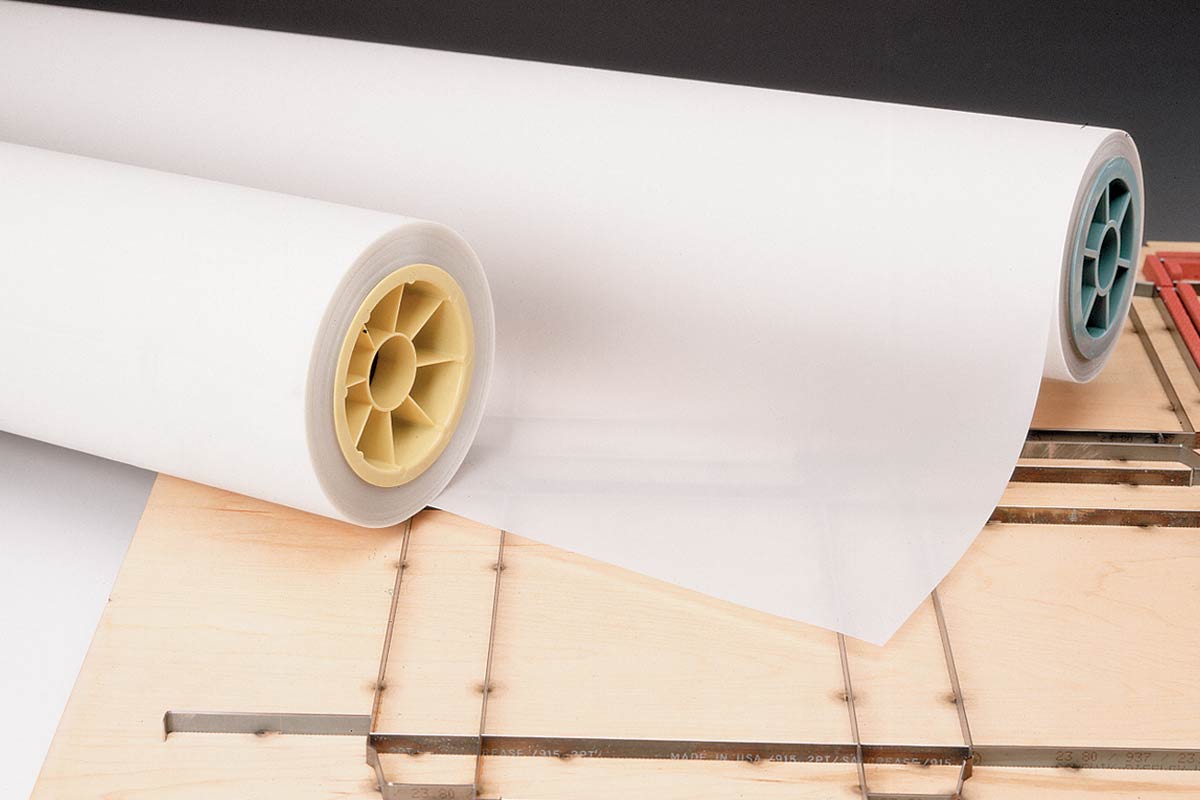

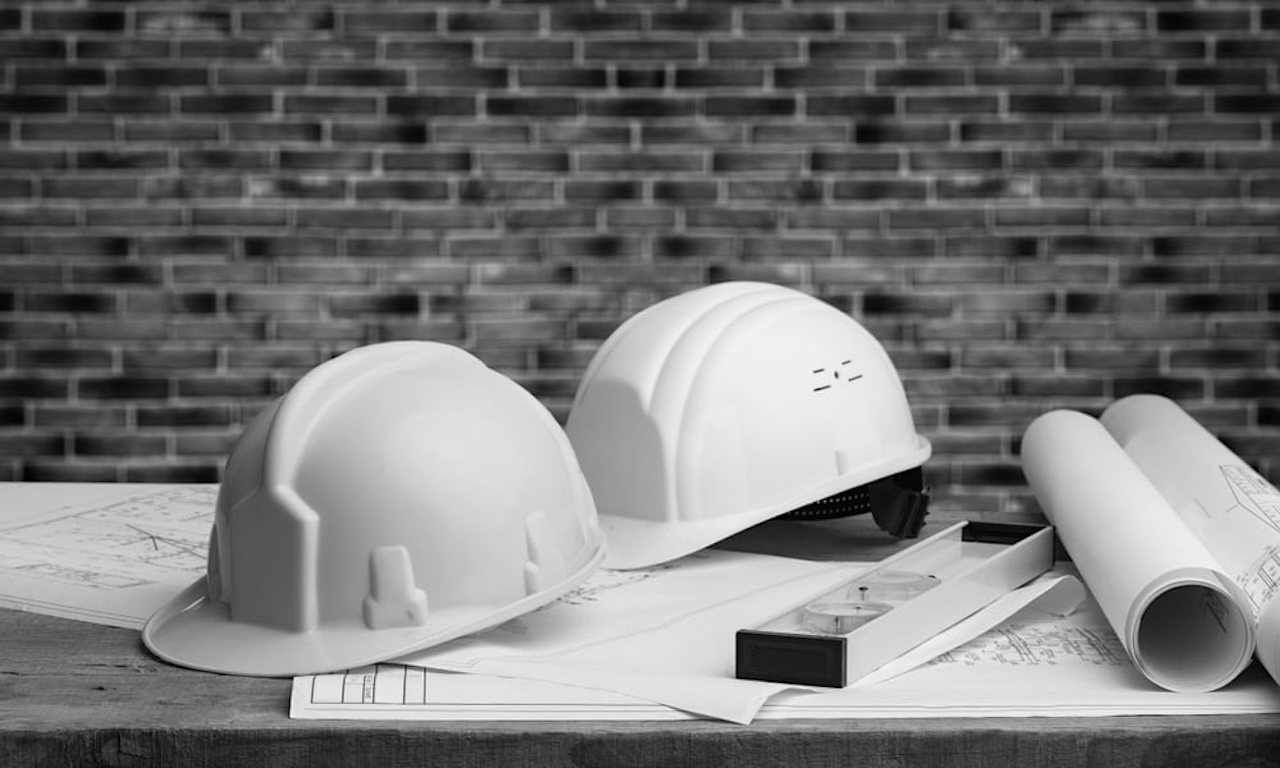
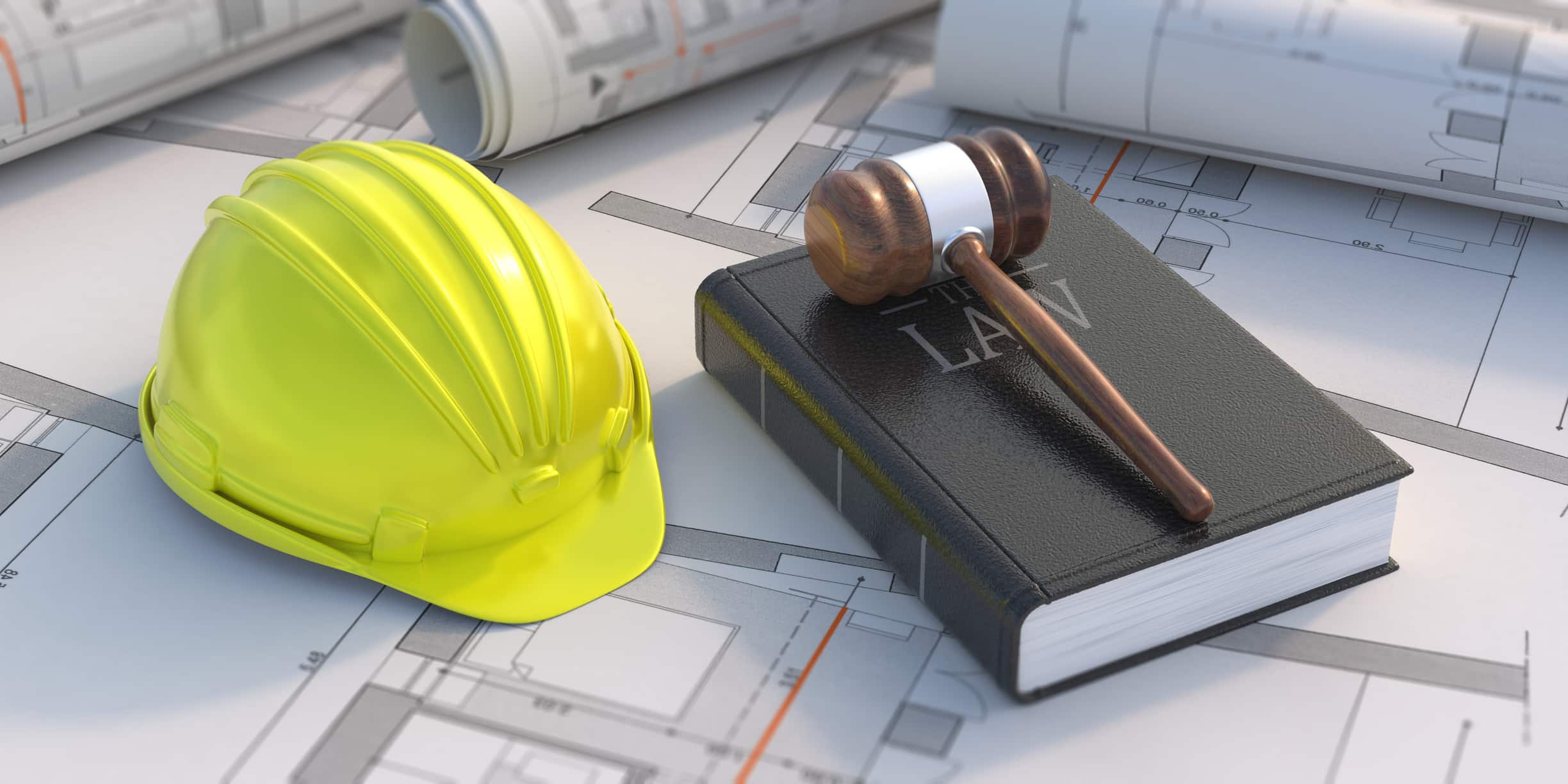

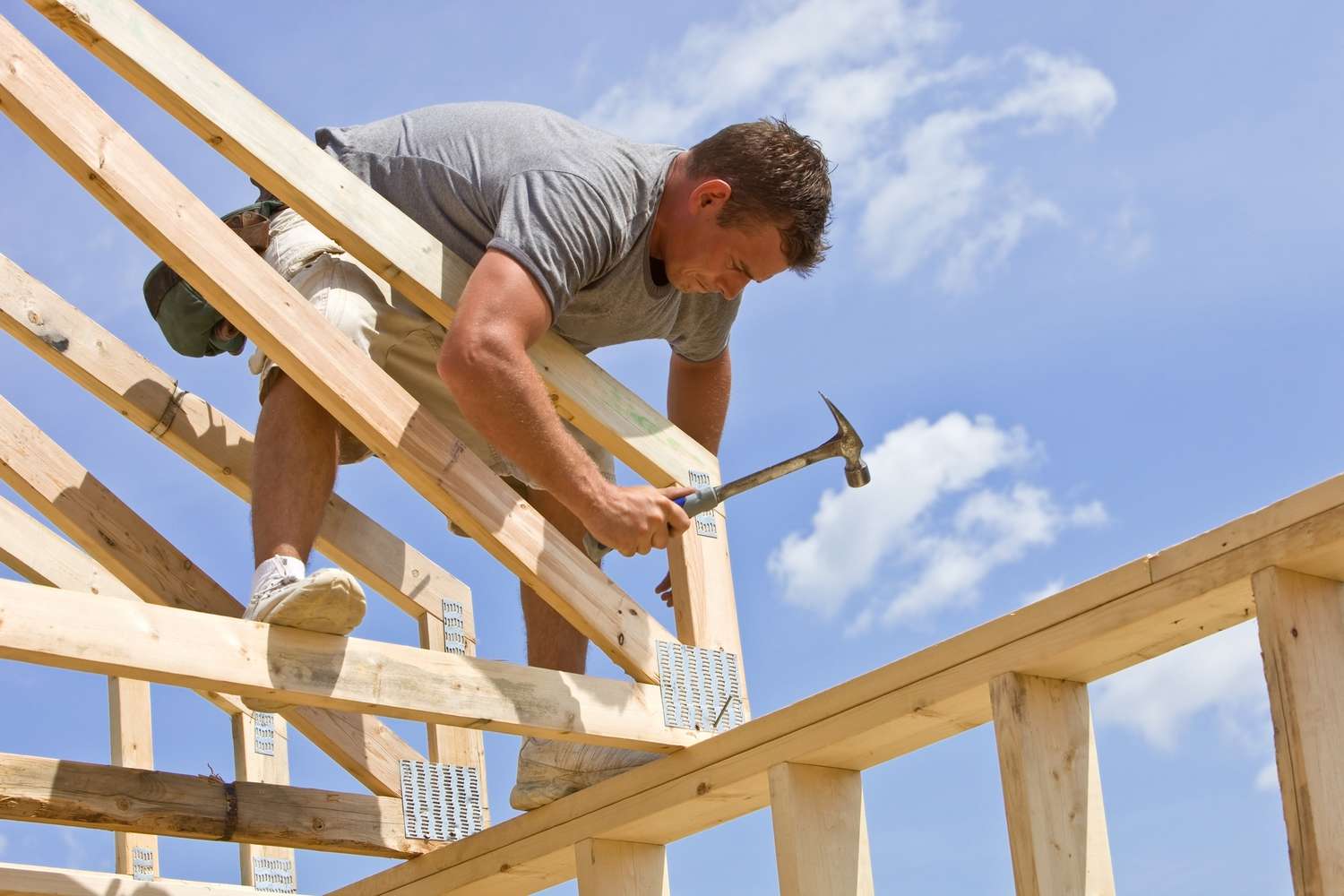

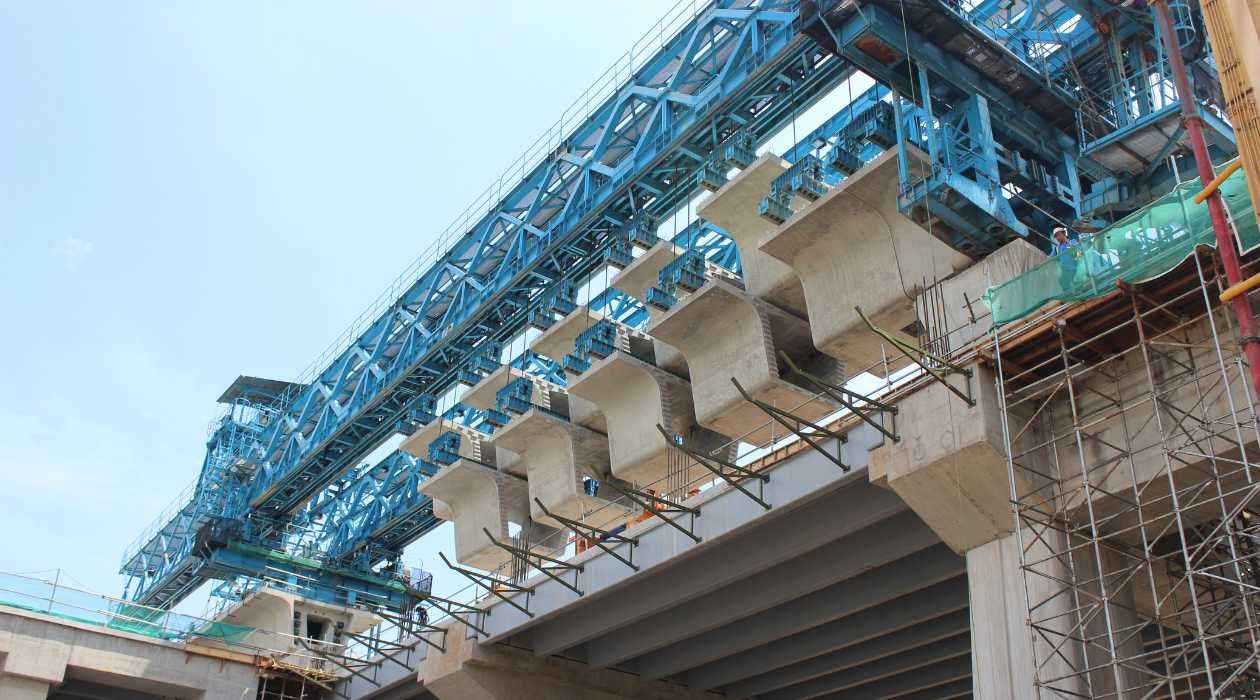
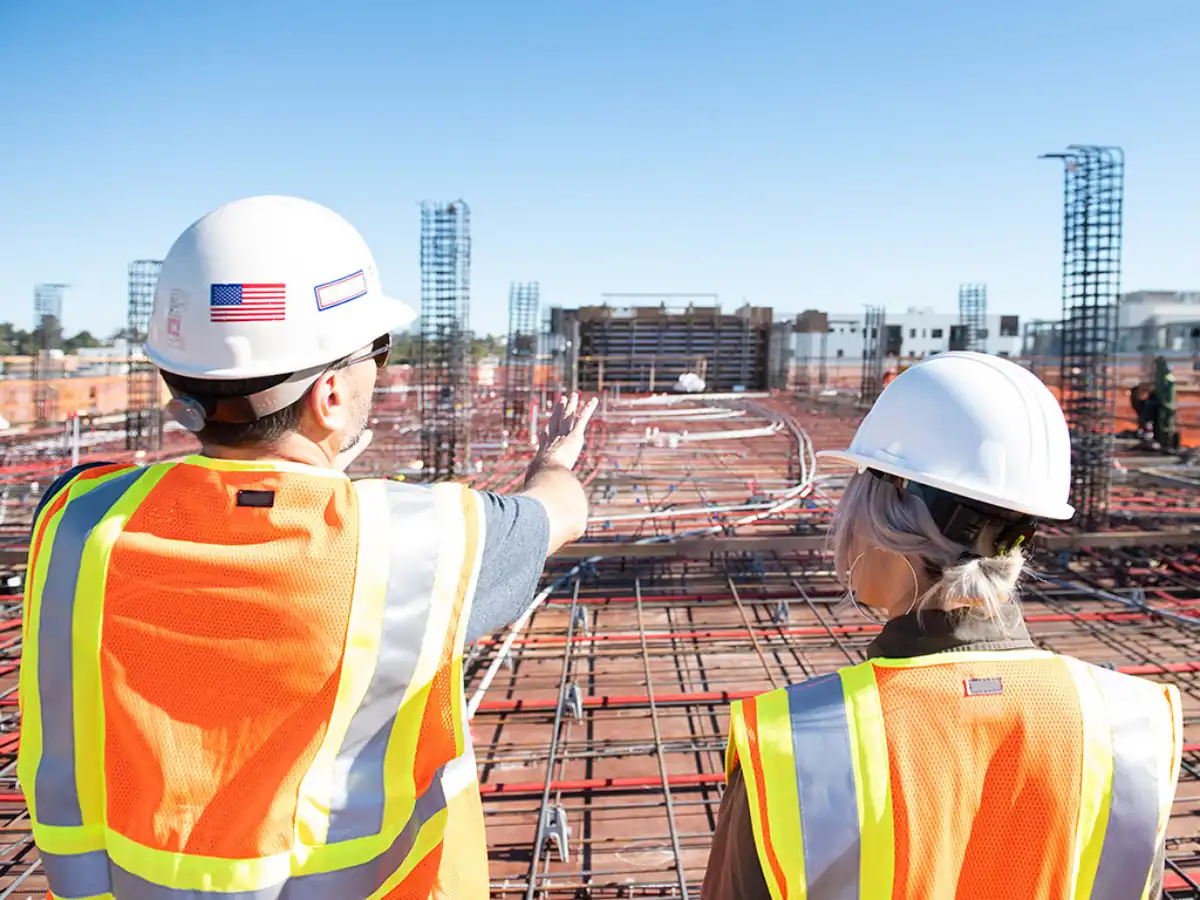


0 thoughts on “What Is A Loader In Construction”